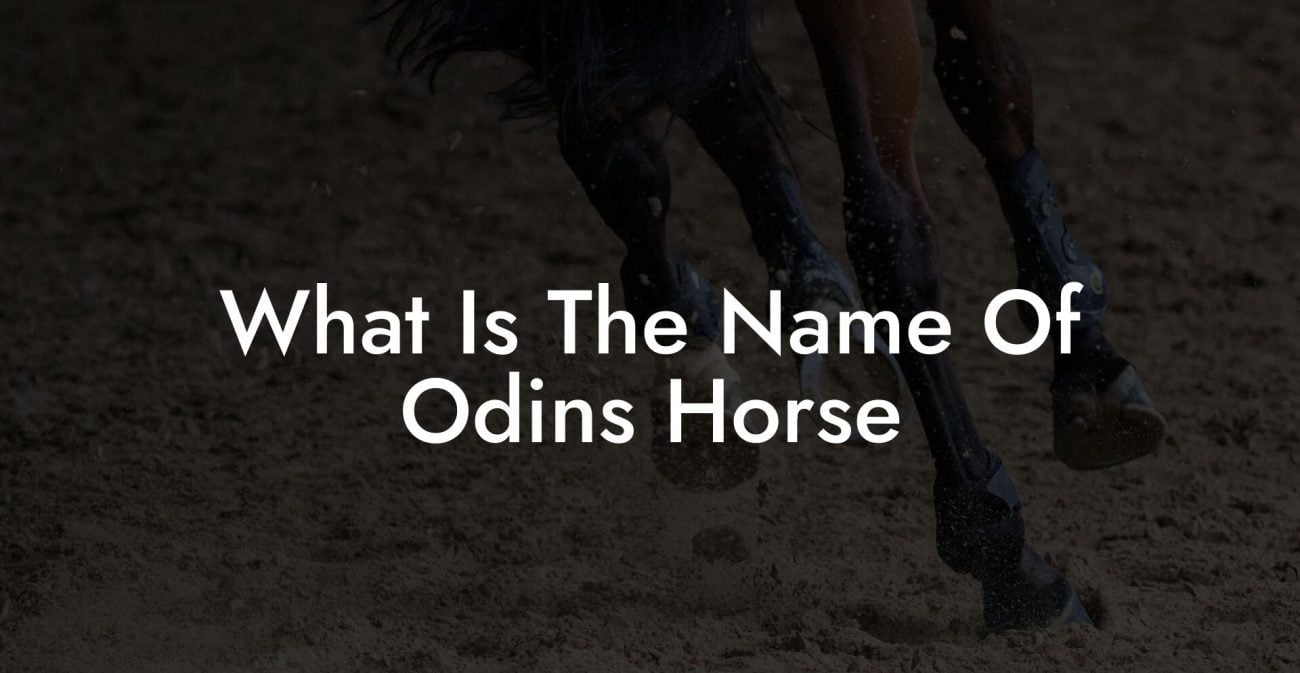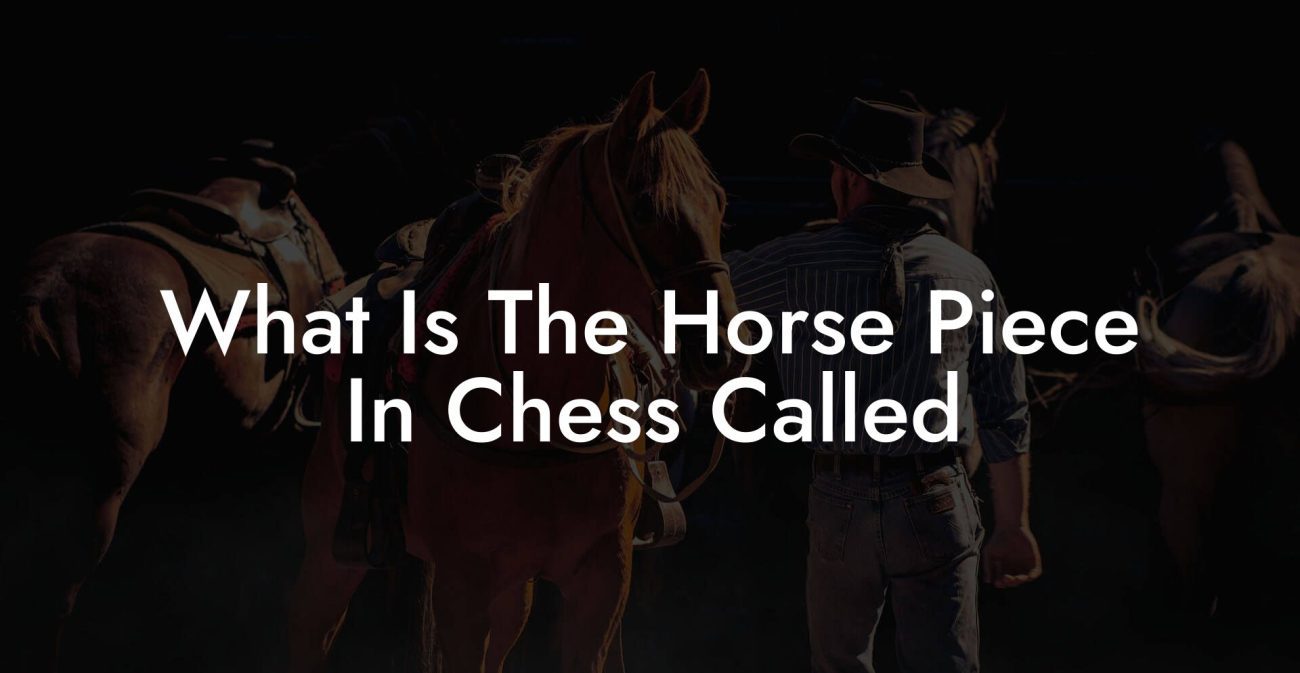Ever wondered why your favorite rodeo clip shows a horse confidently tied to a post like it’s posing for a selfie? The practice might sound as antiquated as using dial-up internet, but it’s steeped in history, practicality, and yes, even a bit of quirky folklore. In this deep dive, we’re unraveling not only what it’s called when you tie a horse to a post, but also exploring everything from the art of hitching to the nuanced tips of modern horse care. So saddle up, because you’re about to discover a fusion of old-school charm and cutting-edge equine management that will have you rethinking the humble hitching post.
Quick Links to Useful Sections
- The Lingo Behind the Loop: Hitching, Tethering, and More
- A Journey Through Time: The History of Hitching Posts
- Modern Horse Care 101: Hitching With Heart and Safety
- Choosing the Right Hitching Post
- Types of Ropes and Their Importance
- Adjusting for Weather and Environment
- Best Practices for Horse Tethering: Keeping Your Equine Safe and Happy
- Mind the Length
- Choose the Right Knot
- Regular Inspections and Adjustments
- Padding and Preventative Measures
- Tech Meets Tradition: Innovations in Equine Tethering
- Smart Hitching Posts
- Eco-Friendly Materials
- Customizable and Aesthetic Designs
- Environmental and Legal Considerations: Tethering With Responsibility
- Environmental Impact
- Legal Considerations
- Alternatives to Tethering: When a Post Isn’t the Perfect Match
- Fenced Paddocks
- Self-Tethering Systems
- Stall and Pasture Integration
- Community and Expert Resources: Your Next Steps in Equine Mastery
- Online Forums and Social Media Groups
- Local Equine Associations and Clinics
- Books, Blogs, and Podcasts
- Common Myths and Misconceptions: Busting the Tethering Taboo
- Myth #1: Tethering is Inherently Cruel
- Myth #2: The Old Ways Are Always Better
- Myth #3: Tethering Impedes Socialization
- From the Stable to the ‘Gram: Sharing Your Equine Journey
- Expert Insights: What Veterinarians and Trainers Say About Tethering
- Design Your Own Equine Tethering Plan: A Step-by-Step Guide
- Step 1: Conduct a Thorough Assessment
- Step 2: Select the Right Equipment
- Step 3: Master the Knot
- Step 4: Implement Regular Maintenance
- Step 5: Monitor and Adapt
- Integrative FAQs About Horse Tethering and Hitching
- Your Journey to Confident, Modern Equine Care
The Lingo Behind the Loop: Hitching, Tethering, and More
When you tie a horse to a post, the process is commonly known as “hitching” or “tethering.” But don’t let those terms fool you into thinking it’s a one-size-fits-all procedure. In the wild world of equine care, the exact terminology can vary depending on the context and tradition. Hitching typically refers to securing a horse using a hitching post, a sturdy, often decorative post designed to anchor a horse’s lead rope. Tethering, on the other hand, implies a bit more flexibility, hinting at temporary restraint rather than a formal, fixed installation.
The language around these practices mirrors the evolution of horse care itself. From ancient civilizations using simple ropes and posts to modern-day equestrians employing high-tech materials and safety designs, the terminology reflects a blend of tradition and innovation. In many rural areas and recreational settings, the phrases “tie-up,” “tether,” or even “hitch” are used interchangeably. It’s all about context, whether you’re on a sprawling ranch in Texas or keeping a pet pony in an urban stable.
For Gen-Z and millennials who grew up with streaming memes and TikTok trends, think of hitching as the vintage precursor to “AirDrop” in equine style, a method that’s practical, a tad aesthetic, and residually cool.
A Journey Through Time: The History of Hitching Posts
Before horses got modern stables and high-tech fencing, hitching posts were vital landmarks in the daily lives of both humans and their equine companions. Imagine a time when the local watering hole wasn’t just a neon-lit bar but a humble village square where horses were tied up, gossip flowed, and community spirit blossomed.
Historical records indicate that hitching posts have been in use for thousands of years. From ancient Roman roads where legionaries would secure their noble steeds to medieval markets bustling with traders and travelers, these posts were not just practical but also symbolic. They represented stability, safety, and a temporary home for horses, a place where animals could rest and recover before heading back into the busy demands of work and travel.
In many cultures, hitching posts transcended their mere functional role. They often became decorative focal points, adorned with carvings and intricate designs. These artistic expressions not only served an aesthetic purpose but were also believed to ward off evil spirits and protect the animals tied to them. Even today, you’ll find some ranches and farms that pay homage to this cultural legacy with vintage-style hitching posts that blend rustic charm and modern safety features.
Modern Horse Care 101: Hitching With Heart and Safety
Fast forward to today, and while the romance of an old-time hitching post hasn’t faded, modern equine care has evolved to embrace safety, practicality, and aesthetics. For the modern horse owner, especially the digitally savvy Gen-Z and millennial crowd, there’s as much interest in the “how” as there is in the “why” behind these practices.
Choosing the Right Hitching Post
The first step in tying your horse to a post is, obviously, selecting the right post. Modern hitching posts come in a variety of materials, from rugged treated wood to sleek metal designs. But here’s the catch: A great hitching post isn’t just about looks; it must provide stability, durability, and a touch of safety that both you and your horse can rely on.
When shopping for a hitching post, consider factors such as height, diameter, and resistance to weather. Think of it as picking out the perfect pair of sneakers, they not only have to look cool but also need to support you on long walks.
Types of Ropes and Their Importance
There’s a surprising amount of variety when it comes to the ropes used in tying a horse to a post. Natural fibers like cotton offer softness and flexibility but may not have the durability needed for long-term exposure. Synthetic ropes, made from materials such as polypropylene or nylon, are favored in modern settings for their strength, longevity, and resistance to the elements.
Understanding the balance between comfort for the horse and durability for the owner is essential. The rope should be long enough to allow some movement to avoid discomfort yet short enough to maintain control. Think of it as finding the ideal scroll length for your favorite social media feed: long enough to be engaging, yet concise enough to keep your pace.
Adjusting for Weather and Environment
Horses, like the rest of us, can be sensitive to weather changes. In hot climates, authorities recommend that the rope and post are positioned in shady, well-ventilated areas. Conversely, in colder regions, keeping both the horse and the materials dry and warm is paramount. Modern materials and design innovations are making it easier than ever to tackle these challenges.
Whether it’s UV-resistant coatings on hitching posts or ropes engineered to handle the harshest of winters, these enhancements are as crucial as a good Wi-Fi connection for a millennial on a road trip.
Best Practices for Horse Tethering: Keeping Your Equine Safe and Happy
Tying a horse to a post isn’t just a casual afterthought, it’s an integral part of daily horse care that demands attention to detail and a deep consideration of safety and comfort. Here are some indispensable tips to ensure that your horse enjoys its tether time without stress:
Mind the Length
One of the common mistakes is tethering too tightly. A rope that’s too short can impose uncomfortable restrictions on a horse’s natural movements, potentially causing stress and injuries. Instead, ensure that the lead rope offers ample slack for the horse to shift its weight and move around a bit. Picture that all-nighter on campus where you needed a little extra freedom, you don’t want your horse feeling equally restrained!
Choose the Right Knot
When it comes to tying your horse securely, the knot you choose is paramount. The most widely recommended is the hitch knot, celebrated for its balance of security and ease of untying. Practice makes perfect here: just as you’d perfect your snapbacks and round-up dances, mastering the ideal knot will ensure that your horse remains safe, while you avoid any unnecessary hassle when it’s time for untying.
Regular Inspections and Adjustments
The environment is ever-changing, and so is wear and tear on equipment. Make it part of your routine to inspect the rope and hitching post for signs of damage, fraying, or weather-related deterioration. Just as you wouldn’t go on a road trip with a cracked smartphone screen, be proactive in maintaining the health of your tethering gear.
Padding and Preventative Measures
For the ultimate in both style and protection, consider adding padding or protective coverings to the post. This step can prevent abrasions on your horse’s neck and add an extra layer of safety, making your trusty hitching post a comfortable resting spot rather than a potential hazard.
These practices, when combined with a modern understanding of equine health, can help create an environment where horses not only look cool, like Instagram influencers, but also feel secure and cared for.
Tech Meets Tradition: Innovations in Equine Tethering
In an era where even your toaster might be smart, horse care isn’t immune to innovation. The traditional hitching post has seen its share of upgrades, with modern technology stepping in to improve safety, durability, and even connectivity.
Smart Hitching Posts
Yes, you read that right, a smart hitching post. These modern marvels incorporate sensors that can monitor the tension in the rope, the weather, and even the horse’s movement patterns. In cases of unexpected behavior or unsafe conditions, the system can alert owners in real time via smartphone apps. This level of oversight is akin to having a fitness tracker for your horse, ensuring all is well when you’re busy scrolling through social media.
Eco-Friendly Materials
Sustainability is a buzzword in virtually every industry today, and equine care is no exception. Manufacturers are increasingly opting for eco-friendly materials in the fabrication of hitching posts and ropes. These sustainable options not only reduce environmental impact but also appeal to the values of modern, eco-conscious horse enthusiasts.
Customizable and Aesthetic Designs
Gone are the days when a hitching post was merely a functional tool, you can now find one that doubles as a decorative piece. Customizable posts, available in a range of styles and finishes, allow you to inject personality and flair into your horse’s resting area. It’s like choosing between a vintage filter or a modern editing app on your favorite photo, the right look can make all the difference.
With these advancements, modern tethering marries tradition with technology, ensuring that the age-old practice of hitching is as safe and efficient as it is nostalgic.
Environmental and Legal Considerations: Tethering With Responsibility
While the romance of tying a horse to a post is undeniable, responsible horse care goes beyond aesthetics and convenience, it includes understanding environmental impacts and legal responsibilities. Whether you’re tethering on a sprawling farm or in a suburban setting, there are some key considerations to keep in mind.
Environmental Impact
The materials you choose for hitching posts and ropes can have an environmental footprint. Opting for sustainably sourced wood or recycled synthetics not only aligns with green practices but also appeals to the modern mindset of ecological responsibility. Additionally, consider the placement of your hitching post; try to avoid sensitive ecosystems or areas where wildlife might be disturbed.
Remember, responsible tethering is about coexisting with nature without compromising on animal welfare or local ecosystems, think of it as being a conscientious digital citizen who respects both online and offline communities.
Legal Considerations
Depending on where you live, there might be local regulations and ordinances governing how and where you can tether your horse. Some jurisdictions may have specific standards for the construction and placement of hitching posts on public land or in commercial settings. It’s crucial to do your homework and, if necessary, consult with local authorities or equine professionals.
These legal factors aren’t meant to be a buzzkill, they’re simply another layer of modern responsibility that ensures safety and community respect. After all, caring for a horse in the 21st century is as much about smart management as it is about honoring tradition.
Alternatives to Tethering: When a Post Isn’t the Perfect Match
Although hitching a horse to a post has been a long-standing tradition in equine care, it’s not always the optimal solution. With advances in horse management and facility design, there are numerous alternatives that might better suit your situation, lifestyle, or the specific needs of your horse.
Fenced Paddocks
Rather than tying your horse to a fixed point, many equine facilities now offer spacious, fenced paddocks. These areas provide ample room for movement and social interaction, reducing the risk of stress or injury caused by confinement. Paddocks are especially effective for more active horses that benefit from additional exercise and socialization.
Self-Tethering Systems
Innovative self-tethering systems are designed to allow horses a degree of freedom while still remaining safely contained. These systems can involve retractable lines or strategically placed anchoring points that adjust based on the horse’s movement. Think of it as the equine equivalent of a smart door lock, efficient, secure, and stress-free.
Stall and Pasture Integration
Many modern stables have seamlessly combined indoor comfort with outdoor freedom. A horse can spend the night in a cozy stall and then enjoy a run in an attached pasture during the day. This hybrid system ensures that your horse benefits from both protection and the natural stimulation of open space.
Whichever alternative you choose, the goal remains the same: offering the best of safety, comfort, and practicality while respecting the animal’s well-being and modern equine management practices.
Community and Expert Resources: Your Next Steps in Equine Mastery
Embracing the legacy and future of equine care means engaging with a vibrant community of horse lovers, experts, and enthusiasts. Whether you’re a seasoned equestrian or a curious newcomer wanting to learn the ropes (pun absolutely intended), tapping into community resources can be a game changer.
Online Forums and Social Media Groups
There’s no shortage of online communities where you can ask questions, share tips, and connect with other horse owners. Platforms like Reddit, Facebook groups, and even TikTok channels offer a treasure trove of advice, from the best hitching posts to the latest innovations in horse care technology. These communities are modern-day watering holes where wisdom is shared and friendships are forged over a mutual love of equine life.
Local Equine Associations and Clinics
Don’t underestimate the benefits of face-to-face interactions. Local horse clubs, riding schools, and veterinary clinics often host events, workshops, and seminars on the latest in horse care. Attending these events can not only enhance your knowledge but can also help you build a network of professionals who can offer tailored advice for your unique situation.
Books, Blogs, and Podcasts
For those moments when you have a little downtime, there’s a world of literature and media at your fingertips. Many books and blogs now focus on the art and science of modern equine care, blending traditional wisdom with cutting-edge research. Podcasts hosted by industry experts break down complex topics into engaging, digestible episodes, perfect for those long rides or quiet evenings.
Whether you’re here to refine your skills or simply absorb new perspectives, these resources are your launchpad for a thriving equine care journey.
Common Myths and Misconceptions: Busting the Tethering Taboo
Like many traditional practices, hitching a horse to a post is surrounded by myths and misconceptions that can sometimes lead to confusion or even improper care. Let’s debunk a few of the most prevalent ideas:
Myth #1: Tethering is Inherently Cruel
One of the most common misconceptions is that tying a horse to a post is cruel or unnecessarily restrictive. In reality, when done correctly, tethering is a safe, temporary measure designed for the benefit of the animal. With proper equipment and regular supervision, a well-tethered horse can be both comfortable and secure.
Myth #2: The Old Ways Are Always Better
Nostalgia can sometimes cloud judgment, but while traditional hitching posts carry a certain rustic charm, modern materials and designs have significantly improved safety and convenience. A modern hitching solution can be both retro in style and state-of-the-art in functionality.
Myth #3: Tethering Impedes Socialization
Another concern is that a tethered horse might become isolated or agitated. However, with the right setup, such as situating the post in an environment where the horse can still see and interact with its herd, tethering need not mean isolation. In fact, many horses appreciate a little personal space when needed.
By separating fact from fiction, you can ensure that your equine friend enjoys the best of both worlds: the safety and security of a proper tethering system, combined with the freedom to engage with its surroundings.
From the Stable to the ‘Gram: Sharing Your Equine Journey
In the era of social media and influencer culture, every unique aspect of your life, even something as seemingly mundane as hitching a horse to a post, can become a statement of style and care. Modern horse owners are increasingly using their online presence to share the ins and outs of equine management, from innovative tethering setups to creative stable designs.
Visual storytelling is key. Whether you’re snapping photos of your decked-out hitching post or sharing a behind-the-scenes look at your daily care routine, authentic content resonates with your followers. It’s not just about showing off; it’s about inspiring a community of like-minded enthusiasts who value both tradition and modern innovation.
Hashtags like #EquineLife, #HorseCareHacks, and #ModernRanch are more than just trends, they serve as gateways to a global network of horse lovers who continually redefine what it means to be a responsible and innovative equestrian.
Expert Insights: What Veterinarians and Trainers Say About Tethering
No pillar page on modern horse care would be complete without tapping into the wisdom of experts. Veterinarians, trainers, and seasoned equestrians all agree that the success of tethering hinges on a few golden rules: proper equipment, regular maintenance, and constant observation of the horse’s behavior.
Dr. Samantha Reyes, a renowned equine veterinarian, advises, “Tethering a horse safely is all about balance. You need to ensure that the horse can move enough to stay comfortable, but not so much that it risks entanglement or injury. Regular inspections of the rope and post are critical, as is understanding your horse’s individual needs.”
Similarly, expert horse trainer Marcus “Mack” Hill emphasizes the importance of gradual acclimation. “If a horse isn’t used to being tethered, start slow. Let them get accustomed to the post and the feeling of the rope before expecting them to stay put for longer periods. It's all about building trust and ensuring the animal feels secure,” Mack explains.
Combining these expert insights with modern technology and traditional know-how creates a comprehensive approach to equine care that is both innovative and deeply respectful of the horse’s well-being.
Design Your Own Equine Tethering Plan: A Step-by-Step Guide
Ready to roll up your sleeves and craft the perfect tethering plan for your horse? Here’s a concise, step-by-step guide designed to blend time-tested techniques with contemporary best practices:
Step 1: Conduct a Thorough Assessment
Start with an on-site evaluation. Understand the specific needs of your horse, consider factors like temperament, size, and daily activity. Assess the available space and ensure that the chosen area is free from hazards and provides the necessary shade or shelter.
Step 2: Select the Right Equipment
Choose a hitching post that fits your space and style. Opt for durable, weather-resistant materials and pair it with a robust, comfortable rope engineered for longevity. Don’t rush this step, the right gear is essential for both safety and functionality.
Step 3: Master the Knot
Practice tying the hitch knot, ensuring that it’s secure yet easy to undo. Repeated practice will help you nail down the perfect balance between a firm hold and the flexibility needed for your horse's comfort. If you’re new to knot tying, there are plenty of instructional videos online that break it down in simple, meme-worthy steps.
Step 4: Implement Regular Maintenance
Schedule routine inspections of your tethering equipment. Check the rope for frays, the post for signs of weather-related wear, and ensure that the area remains safe and free of unexpected hazards.
Step 5: Monitor and Adapt
Pay close attention to your horse’s behavior. If your equine friend shows signs of discomfort or agitation, re-evaluate your setup immediately. Improvement is a journey, what works well one season might need tweaking the next.
With this plan, you’re not just following tradition, you’re modernizing it. Enjoy the satisfaction of knowing that you’re providing your horse with a safe, reliable, and even Instagram-worthy space to rest.
Integrative FAQs About Horse Tethering and Hitching
We get it, there’s a lot to digest when it comes to the art of tying a horse to a post. Here are some frequently asked questions that cut through the hay:
1. What is the difference between hitching and tethering a horse?
Hitching typically involves using a hitching post to secure a horse with a fixed lead rope, while tethering can refer to a less permanent, more flexible way of keeping a horse confined. Both methods are designed to provide safety and allow for a modicum of movement.
2. Are there any safety risks associated with tying a horse to a post?
When done correctly, tethering is safe. The key is to ensure that the rope isn’t too short, the knot is secure yet forgiving, and regular inspections are performed. Watching your horse’s behavior and adapting your setup as needed is essential.
3. What materials are best for modern hitching posts and ropes?
Modern hitching posts often feature weather-resistant woods or metals, while ropes made from synthetic fibers like nylon or polypropylene offer strength and durability. Some setups even incorporate eco-friendly materials for that extra green edge.
4. Can tethering affect a horse’s behavior and well-being?
A properly managed tethering system should have no negative impact. On the contrary, it can provide a calming routine if the horse is gradually acclimated. Always ensure that the horse has enough room to move and isn’t left isolated for extended periods.
5. How do smart hitching posts work?
Smart hitching posts integrate sensors that monitor rope tension, environmental conditions, and sometimes even the horse’s movement. These systems can send alerts to your phone, ensuring you’re always in the loop about your horse’s status.
6. What alternatives exist if tethering isn’t suitable for my horse?
Alternatives like fenced paddocks, self-tethering systems, or integrated stall and pasture setups offer more freedom while still ensuring safety. The choice depends on your horse’s temperament and your available space.
7. How important is regular maintenance in tethering systems?
Extremely important. Regular inspections of the rope, post, and surrounding area ensure that wear and tear do not compromise safety. Think of it as constantly updating your operating system to avoid glitches.
8. Are there legal or environmental considerations in tethering horses?
Yes, local regulations might dictate how and where tethering is permitted. Additionally, using sustainable materials and ensuring that the tethering location minimizes environmental disruption are key aspects of responsible horse care.
Your Journey to Confident, Modern Equine Care
Embracing the tradition of hitching and tethering doesn’t mean you’re stuck in the past, it’s a dynamic blend of history, technology, and genuine horse care. By understanding the terminology, respecting time-honored practices, and integrating modern innovations, you’re not just tying a horse to a post; you’re crafting a safe, empowering environment for your equine companion.
Whether you’re a Gen-Z equestrian discovering the timeless charm of a hitching post for the first time, or a millennial with years of stable know-how, the evolution of tethering techniques empowers you to care for your horse with a perfect balance of tradition and modern ingenuity. Every knot tied, every maintenance check made, and every shared tip on social media contributes to a community devoted to the art of modern equine management.
So next time you see that iconic image of a horse at a hitching post, remember: it’s not just a relic of the past, it’s a vibrant connection to the history, safety, and future of horse care. Now, go forth and show the world that caring for your horse can be both an art and a science, a tradition reinvented for today.
Your journey toward confident, modern equine care begins with a single, well-tied knot. Embrace the legacy, innovate for the future, and let your equine companion bask under the watchful eyes of both classic wisdom and cutting-edge solutions.













